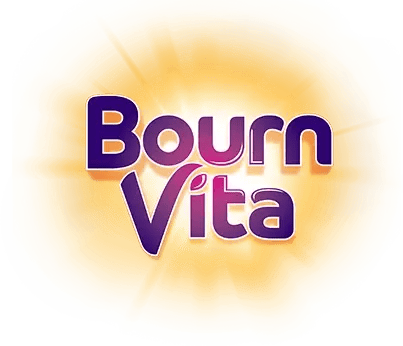- Figs (Anjeer)
- Oranges
- Jamun (Indian Blackberry)
- Guava (Amrood)
- Dates (Khajoor)
- Wood Apple (Bael)
- Indian Gooseberry (Amla)
- Custard Apple (Sitaphal)
- Lychee
Introduction

Strong bones, steady heartbeats, healthy teeth, and sharp nerve function all have one thing in common, calcium. While milk and dairy often get the spotlight, fruits can be just as powerful in delivering this essential mineral. Some of them quietly provide a solid boost of calcium, along with extra nutrients that make your body use it better.
Think Vitamin C, potassium, magnesium, and fibre, all working together to improve absorption and keep your bones and muscles in top form. A fruit bowl can be more than just a splash of colour on the table; it can be a daily dose of wellness. From tropical favourites to local seasonal picks, many fruits have more calcium than you’d expect. Whether blended into smoothies, tucked into lunchboxes, or enjoyed as a quick evening snack, they’re simple, fresh, and perfect for every lifestyle.
9 Delicious And Naturally Sweet Ways To Strengthen Kid’s Body With Calcium-Rich Fruits

Calcium doesn’t have to come from just milk or supplements. Some fruits offer a meaningful amount of this bone-strengthening mineral, plus the added bonus of flavor, fibre, and natural hydration. For families looking for easy and wholesome options, these fruits are simple to include and perfect for everyday eating.
Below is a list of 9 fruits that are both tasty and good for you. They can be eaten on their own or mixed into your meals, making it easy to nourish your body without changing your food habits too much.
Figs (Anjeer)
As per a study published in Nutrients. 2023, figs, especially dried ones, are one of the best fruit-based sources of calcium. Just four dried figs give you about 120 mg of calcium. They also offer fibre, antioxidants, and potassium. Figs are great for digestive health, and their natural sweetness makes them a tasty snack or dessert topper. Soak them overnight for better absorption and enjoy them with your morning meal.
Oranges
According to a study published in Adv Nutr. 2012, one medium orange contained about 40–50 mg of calcium, along with a big dose of Vitamin C, which helps the body absorb calcium efficiently. Oranges are refreshing, hydrating, and easy to include in your daily diet as juice, slices, or even in salads. They support bone health, immunity, and skin wellness, all in one juicy bite.
Jamun (Indian Blackberry)
Jamun is a seasonal fruit native to India and widely appreciated for its blood sugar-balancing properties. Study published in Molecules. 2022, suggests that it contains small but useful amounts of calcium, along with iron, Vitamin C, and antioxidants. Its deep purple color and sharp-sweet flavour make it perfect for juices, chutneys, or just as a fresh monsoon snack.
Guava (Amrood)
Research conducted by Foods. 2021, shows that guava contains around 18–20 mg of calcium per 100 grams and is extremely high in Vitamin C. That means even if it doesn’t offer a huge calcium dose, it helps your body absorb more calcium from other foods. Guava is a crunchy, fibre-rich fruit that supports digestion and immunity. Eat it plain or with a dash of chaat masala for an easy snack.
Dates (Khajoor)
According to a study published in Int J Mol Sci. 2021, dates contain around 15–20 mg of calcium per 100 grams. They’re also rich in potassium and magnesium, which support bone and heart health. You can eat them like this only, or chop them and add to ladoos, or blend into smoothies for a nutritious twist on sweet cravings.
Wood Apple (Bael)
As per a study published in J Food Sci Technol. 2021, bael is a traditional Indian fruit known for its cooling effect on the stomach. It contains calcium along with fibre, Vitamin A, and antioxidants. The pulp can be scooped out and eaten raw or made into a refreshing bael sherbet. This fruit not only supports bone health but also helps with digestion and gut balance.
Indian Gooseberry (Amla)
Amla is widely used in Ayurvedic medicine and is best known for its high Vitamin C content. A study published in Antioxidants (Basel). 2022, shows that it supports calcium absorption and provides a small amount of calcium itself. You can eat it raw, dried, or in the form of murabba, chutney, or juice. Amla is a great immunity booster and also supports skin and hair health.
Custard Apple (Sitaphal)
Custard apple is creamy, naturally sweet, and packed with nutrients like calcium, potassium, and magnesium. According to The Indian Council Of Agricultural Research, it contains about 30 mg of calcium per 100 grams and also helps in muscle function and energy metabolism. Enjoy it chilled, scooped directly from the shell, or blended into milkshakes.
Lychee
A study was conducted by The Lychee Biotechnology. 2017, shows that lychee offers around 5 mg of calcium per 100 grams, not the highest, but still helpful when part of a balanced fruit mix. It also contains Vitamin C and antioxidants that support bone health and immunity. You can eat it fresh, make juice, or add it to salads.
Conclusion

These 9 calcium-rich fruits prove that nourishing your body doesn’t have to be complicated. With their natural sweetness and nutrient-packed profiles, they not only strengthen bones but also boost energy levels, improve nutrient absorption, and aid digestion.
Her love for storytelling began with reading her grandfather’s speeches, where Tarishi saw the power of words in creating lasting memories. Combining her passions for food and writing, she has turned her life into a fulfilling path of sharing stories that celebrate flavours and how food brings communities together.
The views expressed are that of the expert alone.
The information provided in this content is for informational purposes only and should not be considered a substitute for professional medical advice, diagnosis, or treatment. Always seek the advice of your physician or another qualified healthcare provider before making any significant changes to your diet, exercise, or medication routines.
References
https://pmc.ncbi.nlm.nih.gov/articles/PMC8066327/
https://pmc.ncbi.nlm.nih.gov/articles/PMC9654918/
https://icar.org.in/sites/default/files/inline-files/IH-May-June-2020_Final.pdf
https://pmc.ncbi.nlm.nih.gov/articles/PMC10255635/
https://pmc.ncbi.nlm.nih.gov/articles/PMC3649719/
https://pmc.ncbi.nlm.nih.gov/articles/PMC7121025/
















